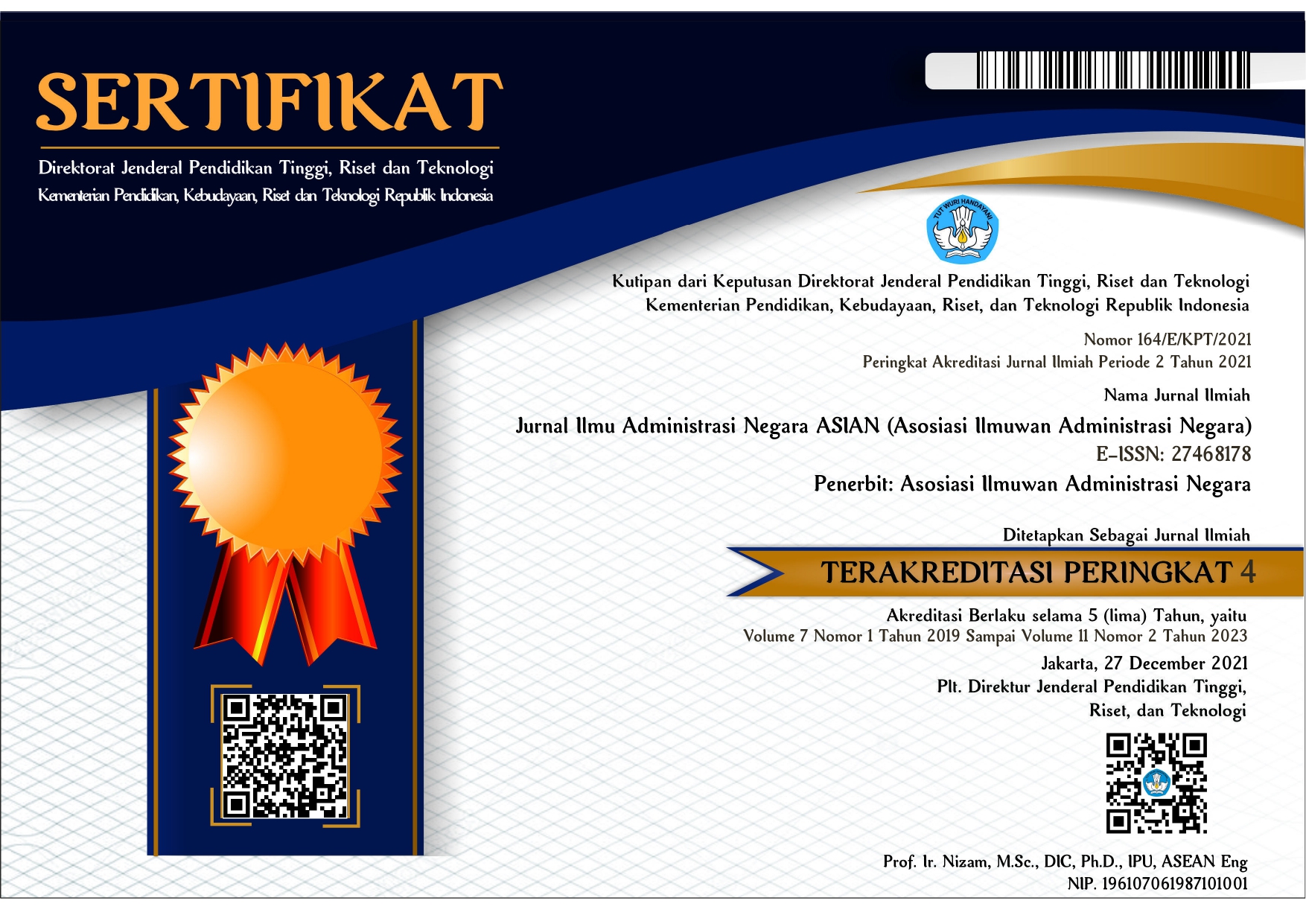Peran Good Governance dalam Program Inovasi Kampung Hijau di Daerah Istimewa Yogyakarta
 Abstract views: 837
,
Abstract views: 837
,
 PDF downloads: 1031
PDF downloads: 1031
Abstract
Good governance is a new spirit delivered for government bureaucracy. Various efforts have been made in order to create good governance so that it can lead to professional, productive, and innovative bureaucracy system. Government institutional becomes the main ditch to achieve respectable governance. Innovation will be convenient if government institutions give adequate spaces toward the roles of other stakeholders and community. The government, another stakeholder, and community are supposed to work together to carry and implement innovation programs in all sectors. Green village is one residential innovation form that should be supported by various actor roles. In addition, in order to establish the relationship between parties, conducive to bureaucracy atmosphere is needed. This paper discusses the implementation of the roles of good governance in facilitating green village innovation program in Daerah Istimewa Yogyakarta. Investigation result toward secondary data shows that the government role of good governance is in regulation, planning, implementation, and assistance. However, the role is only formal not yet intensive. Good governance role of society is in the form of participation, which has worked well in three green villages. However, society participation is not wide spread yet. Meanwhile, the private role is still limited to the mutual interest which is profitable. Recommendation to optimize good governance by performing authentic green bureaucracy, private green action, and social engineering green community.
Downloads
Authors who publish with this journal agree to the following terms:
1. Copyright on any article is retained by the author(s).
2. The author grants the journal, right of first publication with the work simultaneously licensed under a Creative Commons Attribution License that allows others to share the work with an acknowledgment of the work’s authorship and initial publication in this journal.
3. Authors are able to enter into separate, additional contractual arrangements for the non-exclusive distribution of the journal’s published version of the work (e.g., post it to an institutional repository or publish it in a book), with an acknowledgment of its initial publication in this journal.
4. Authors are permitted and encouraged to post their work online (e.g., in institutional repositories or on their website) prior to and during the submission process, as it can lead to productive exchanges, as well as earlier and greater citation of published work.
5. The article and any associated published material is distributed under the Creative Commons Attribution-ShareAlike 4.0 International License









